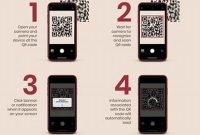In this digital age, paying for goods and services can be done without having to carry cash or cards around. With the advancement in technology, paying through your phone has become a more convenient option for many people. Not only is it easy to use, but it is also secure and eliminates the need to remember a PIN or password. In this article, we will discuss the different ways you can pay through your phone and how it can make your life easier.

The Basics of Paying with Your Phone
As technology improves, more and more people are using their phones to make payments. Paying with your phone is easy, secure, and convenient, but how does it work? This section will cover the basics of how to pay with your phone.
What is Mobile Payment?
Mobile payment, also known as mobile money transfer, involves making payments using a mobile device such as a smartphone or tablet. With mobile payment, you can make purchases, pay bills, transfer funds, and more – all through your phone. There are different technologies and methods used to enable mobile payments, depending on the service provider and device you are using.
How does Mobile Payment work?
Mobile payment works by using near-field communication (NFC), a wireless communication technology that allows data to be exchanged between two devices when they are within a few inches of each other.
- First, you need to download a mobile payment app from your smartphone’s app store.
- Next, you will need to add a payment method, such as a credit or debit card, to the app.
- To make a payment, simply open the app, select the payment method, and hold your phone close to the payment terminal. The NFC technology will transmit the payment information to the terminal, and the payment will be processed instantly.
Depending on the mobile payment service provider and the type of mobile device you are using, there may be additional security measures, such as biometric authentication, to ensure the security of your transactions.
Popular Mobile Payment Methods
There are several popular mobile payment methods that you can use, including:
- Apple Pay: Apple’s mobile payment service allows iPhone and Apple Watch users to make payments using near-field communication technology. Apple Pay is supported by many merchants and banks worldwide.
- Google Pay: Google’s mobile payment service allows Android users to make payments using NFC technology. Google Pay also allows users to store credit and debit card details, as well as loyalty cards and gift cards.
- Samsung Pay: Samsung’s mobile payment service uses both NFC and magnetic secure transmission (MST) technology, which allows users to make payments even if the payment terminal does not support NFC. Samsung Pay is available to Samsung smartphone users.
These are just a few examples of popular mobile payment methods – there are many other services available around the world.
The Advantages of Paying with Your Phone
With the introduction of mobile payment technology, it has become increasingly common to pay for goods and services with your smartphone. This trend has been driven by the many benefits that come with paying with your phone. Below are some of the advantages of paying with your phone.
Convenience
The convenience of paying with your phone cannot be understated. With mobile payments, you don’t need to carry cash or cards in your pocket. You can pay for goods and services with just a few taps on your phone. This is especially handy for those impulsive purchases or when you’re in a rush and don’t have the time to fumble through your purse or wallet for cash or a credit card.
- Pay without carrying cash or cards in your pocket
- Easily pay for goods and services with a few taps on your phone
- Handy for impulsive purchases or when in a rush and don’t have time to access your purse or wallet
Speed
Another advantage of paying with your phone is speed. Mobile payments are faster than traditional payment methods. With mobile payments, you don’t have to wait for a cashier to count out change or get authorization for a credit card transaction. You can pay and move on with your day in a matter of seconds.
- Mobile payments are faster than traditional payment methods
- Avoid waiting for a cashier to count out change or authorize a credit card transaction
- Ability to pay and move on with your day in a matter of seconds
Added Security
Security is a major concern when it comes to payments. With mobile payments, you have an added layer of security. Unlike traditional payment methods, mobile payments use encryption technology to protect your financial information. Additionally, your phone likely has biometric security features such as a fingerprint scanner or facial recognition, which adds another layer of protection.
- Mobile payments have an added layer of security compared to traditional payment methods
- Encryption technology is used to protect your financial information
- Most phones have biometric security features such as a fingerprint scanner or facial recognition which adds another layer of protection
Overall, paying with your phone offers many advantages. The convenience, speed, and added security make mobile payments an attractive option for many people. If you haven’t already, consider giving mobile payments a try and see how they can make your life easier.
The Various Payment Methods for Phones
As technology advances, so does the way we make payments. Mobile phones have become an essential part of our lives, and the convenience they provide extends to paying for goods and services. There are several ways to use your phone to make payments, and we’ll explore them in this article.
Mobile Wallets
Mobile wallets are apps that allow you to store your payment information securely and use it to make purchases. Some popular mobile wallets include Apple Pay, Google Pay, and Samsung Pay. When you make a purchase, you simply use your phone to tap or wave it near the payment terminal to complete the transaction. Mobile wallets can also be used for online purchases and can help protect your information by using encryption and tokenization.
- Apple Pay: This mobile wallet is exclusive to Apple devices and can be linked to credit and debit cards or a bank account. It uses Face ID or Touch ID to authenticate purchases, and transactions are completed using NFC technology.
- Google Pay: Available for both Android and iOS devices, Google Pay allows you to link multiple payment methods, including credit and debit cards and PayPal. It uses Google’s security measures, such as requiring a PIN or password, to protect your information.
- Samsung Pay: This mobile wallet is available on Samsung devices and can link to credit and debit cards. It uses both NFC and Magnetic Secure Transmission (MST) technology to make payments, which means it can be used on most payment terminals.
Mobile Payments
Mobile payments are another way to make purchases using your phone. With these payment methods, you link your phone to your bank account or credit card and use your phone number or a mobile app to complete the transaction. Popular mobile payment apps include Venmo, PayPal, and Cash App.
- Venmo: This app is owned by PayPal and allows you to send money to friends and family using your phone number or email address. You can link your bank account or debit card to Venmo and use it to pay for goods and services.
- PayPal: One of the original online payment systems, PayPal has expanded to include mobile payments. You can link your PayPal account to your bank account or credit card and use it to make purchases online and in-store.
- Cash App: Owned by Square, Cash App allows you to send and receive money, link your debit card to the app, and use it to make purchases at participating retailers. Cash App also offers a debit card linked to your account.
Contactless Payments
Contactless payments use NFC technology to allow you to make purchases by waving or tapping your phone near a payment terminal. Many credit card companies offer contactless payment options, and some banks offer the feature through their mobile apps.
| Credit Card Companies | Mobile Apps |
|---|---|
| Visa | Chase Mobile |
| Mastercard | Bank of America Mobile Banking |
| American Express | Citi Mobile App |
Using your phone to make payments can be quick, convenient, and secure. Whether you choose a mobile wallet, mobile payment app, or contactless payment, be sure to keep your information safe by setting up a strong password and regularly monitoring your account activity.
The Security Measures of Paying with Your Phone
As more and more people are using their phones to make payments, it’s natural to wonder whether these transactions are secure. Here are some of the security measures in place to safeguard your phone payments against fraud and unauthorized access:
Encryption
One of the most important security features of mobile payments is encryption. When you enter your payment information into your phone, it is encrypted before it is sent to the payment processor. This means that your payment information is scrambled, making it incredibly difficult for anyone to intercept and decipher it.
Tokenization
Tokenization is another security protocol that is used in mobile payments. When you make a payment with your phone, a unique token is created that is used to represent your payment information in the transaction. This token is used instead of your actual payment information, making it much harder for hackers to steal your financial data.
Biometrics
Many mobile payment systems also use biometrics to help keep your information secure. Biometric data, such as your fingerprint or face, can be used to authenticate your identity when you make a payment. This adds an extra layer of protection against fraud, since it’s much harder for someone to steal your biometric data than it is for them to steal a password or PIN.
Two-Factor Authentication
Two-factor authentication is another security feature that many mobile payment systems use. With two-factor authentication, you need to provide two forms of identification in order to make a payment. For example, you might need to enter a password or PIN, as well as provide a biometric scan.
Mobile Security Software
To make sure your phone payments are as secure as possible, it’s important to keep your phone’s security software up to date. This includes downloading the latest security patches and updates, as well as using a reputable anti-virus program.
In conclusion, mobile payments are generally safe and secure, thanks to the security protocols in place to protect your personal data. However, it’s still important to take steps to protect yourself, such as keeping your phone and security software up to date.
The Future of Paying with Your Phone
Paying with your phone has become increasingly popular due to its convenience and security. However, this technology is still evolving and new innovations are on the horizon.
Biometric Authentication
One of the latest trends in phone payments is biometric authentication. This technology uses your unique biometric traits, such as your fingerprint or facial recognition, to authorize a payment. This not only enhances security but also makes the payment process faster and more seamless. As more phones are equipped with biometric scanners, we can expect this authentication method to become more widespread.
Blockchain Technology
Blockchain technology is another innovation that promises to revolutionize phone payments. This technology allows for secure and transparent transactions without the need for intermediaries such as banks. As a decentralized system, blockchain ensures that payments cannot be altered or reversed, making it a highly secure payment method. However, it is still in the early stages of adoption and requires further development to become widely available.
A.I. Virtual Assistants
Virtual assistant technology, such as Siri and Alexa, is becoming more integrated into our daily lives. In the future, it is possible that these AI assistants will be able to make payments on our behalf, making the payment process even more convenient. This could also lead to increased security, as the AI assistant would be able to detect fraudulent transactions more easily than a human could.
Contactless Payments
Contactless payments have already started to become more common, with technologies such as Apple Pay and Google Wallet. However, the future of contactless payments could see even more seamless and intuitive payment options. For example, smart cars equipped with payment technology could allow drivers to pay for gas or tolls without ever taking out their phone.
Global Adoption
While phone payments are growing in popularity, there is still a long way to go in terms of global adoption. In the coming years, we can expect to see more regions and countries adopting phone payments as a standard form of payment. This will not only make payments more convenient for consumers but will also lead to new opportunities for merchants to reach a wider audience.
How to Get Started with Paying Through Your Phone
Mobile payment is becoming a popular mode of transaction around the world. One of the fastest and most convenient ways to pay electronically is through your phone. With just a few taps on your screen, you can complete a transaction without having to carry cash or credit cards. Here’s how you can get started with paying through your phone:
Step 1: Obtain a Mobile Wallet
The first step in paying through your phone is by obtaining a mobile wallet. This is a digital platform where you can store your payment information. This includes your credit or debit card information, as well as other details such as loyalty card information. There are multiple options available for obtaining a mobile wallet. You can either download a mobile wallet app or use your smartphone’s built-in digital wallet, such as Apple Pay, Samsung Pay, or Google Wallet.
Step 2: Link Your Payment Cards
After installing your mobile wallet, link it to your payment cards. You can do this by either scanning your card or entering the details manually. Some wallets may require you to validate your cards through a verification process. Once your payment card is verified, it will be securely stored in your mobile wallet, and you can use it to complete transactions.
Step 3: Add Funds to Your Mobile Wallet
Before you start making payments, make sure to top up your mobile wallet with funds. Mobile wallets can be topped up using a credit or debit card, bank transfer, or by transferring funds from another account. Some wallets may also allow you to load cash at selected locations. Once funds have been added to your wallet, you can use it to pay for goods or services at any merchant that accepts mobile payments.
Step 4: Choose Your Payment Method
When paying with your phone, you have several options to choose from. You can either use a payment card stored in your mobile wallet, scan a QR code, or use NFC (Near Field Communication) technology. To use NFC, hold your phone close to the payment terminal and your phone will transmit the payment details wirelessly. The merchant will then process the payment and you’re done!
Step 5: Keep Your Mobile Wallet Secure
It’s important to keep your mobile wallet secure to prevent unauthorized access or theft of your payment information. Some ways to do this include setting a strong password or PIN, keeping your phone’s software up to date, and avoiding sharing your payment details with anyone.
Step 6: Verify Your Transactions
To ensure that your payment has been successfully processed, make sure to verify the transaction in your wallet app or banking app. This will help you keep track of your expenditure and detect any unauthorized transactions.
Frequently Asked Questions
| Questions | Answers |
|---|---|
| Can I use my phone to pay for anything? | Not everything, but most stores accept payments through mobile wallets like Apple Pay, Google Pay, and Samsung Pay. |
| Is it safe to pay through my phone? | Yes, it’s safe as long as you follow basic security practices, such as using a passcode or fingerprint recognition to unlock your device and paying attention to the app you’re using. |
| What if my phone gets lost or stolen? | Most mobile payments are encrypted with advanced security methods, and many apps allow you to disable access on a lost or stolen device. Contact your payment provider for more information on their security policies. |
| Do I need to have an internet connection to use mobile payments? | Yes, you need to have an active internet connection or data plan to use most mobile payment apps. |
| Can I use mobile payments for online shopping? | Yes, many online retailers accept mobile payments as a payment method. |
Thanks for Choosing Pay with Ease!
Thanks for reading our article on how to pay through your phone. We hope you found it informative and helpful. Paying through your phone is becoming increasingly popular, and with good reason – it’s fast, convenient, and secure. If you have any further questions or comments, please feel free to leave them below in the comment section. And don’t forget to check back with us later for more helpful articles like this one!




